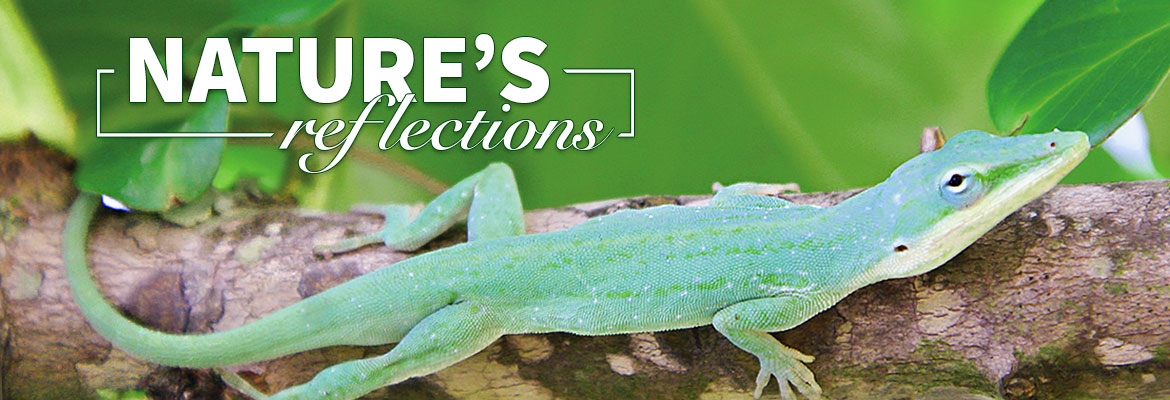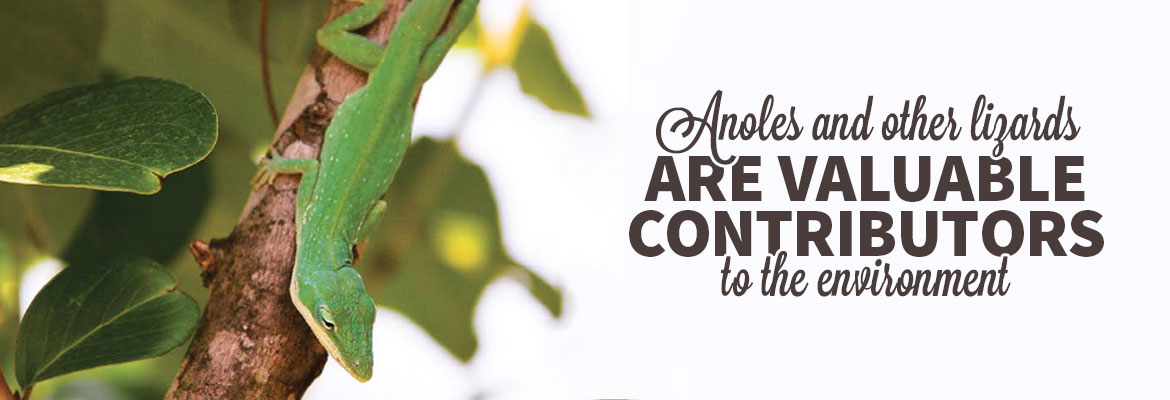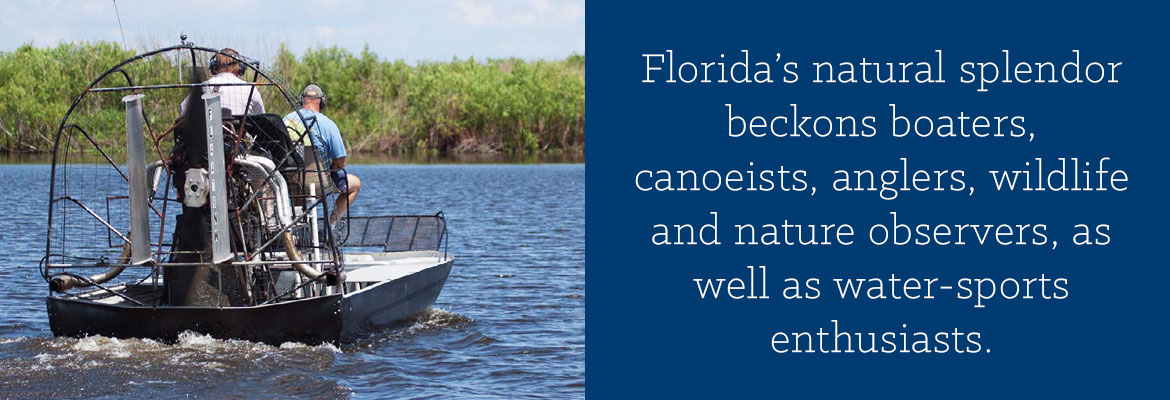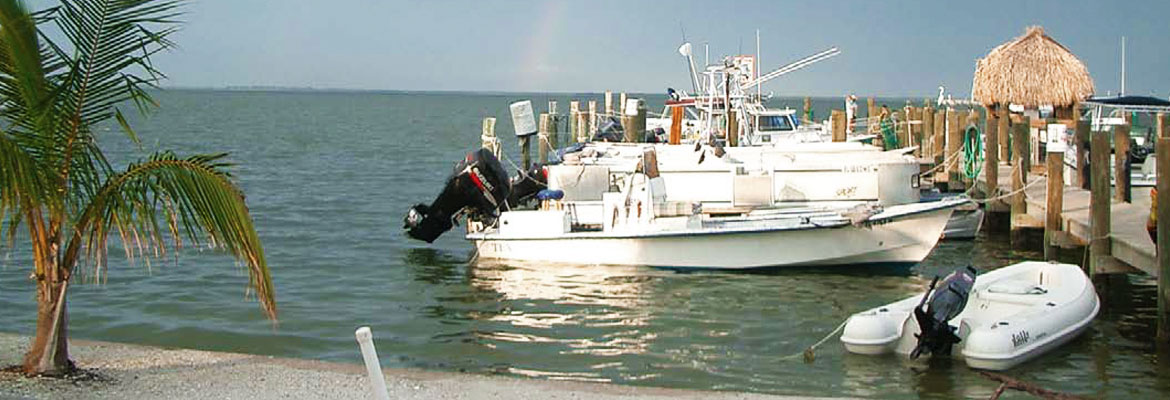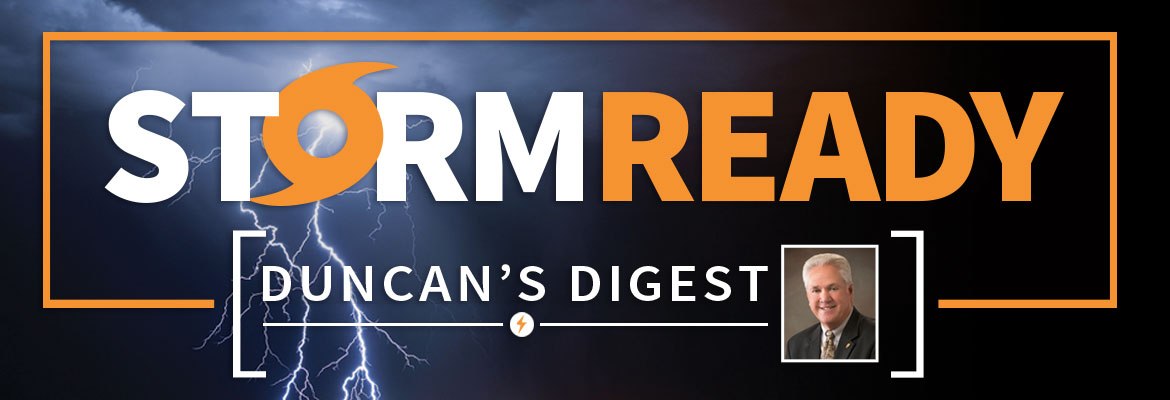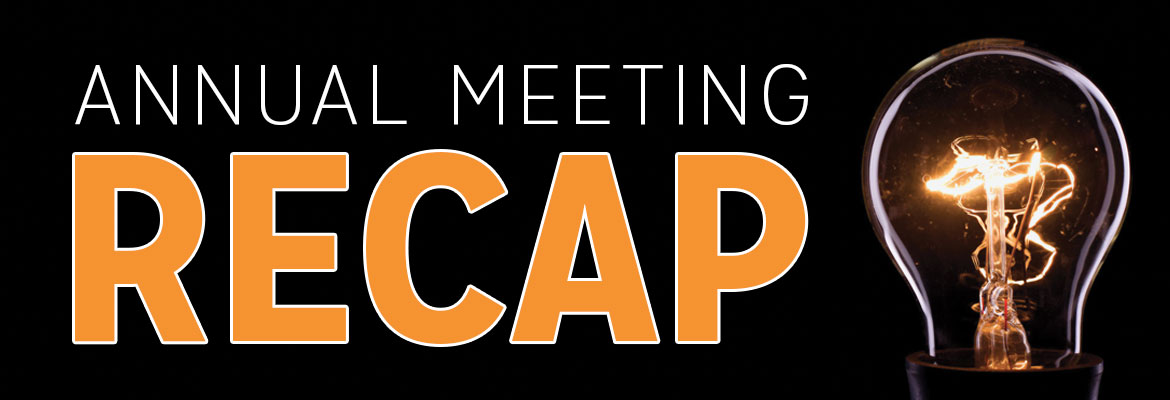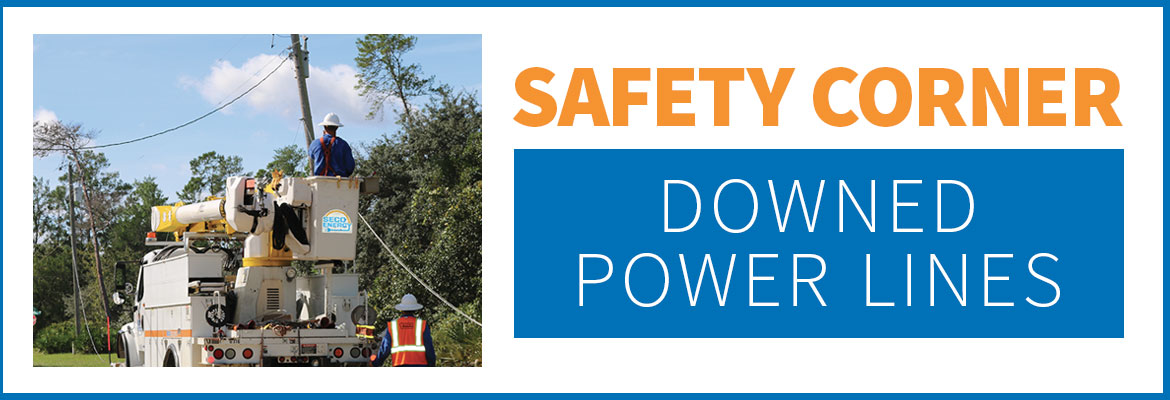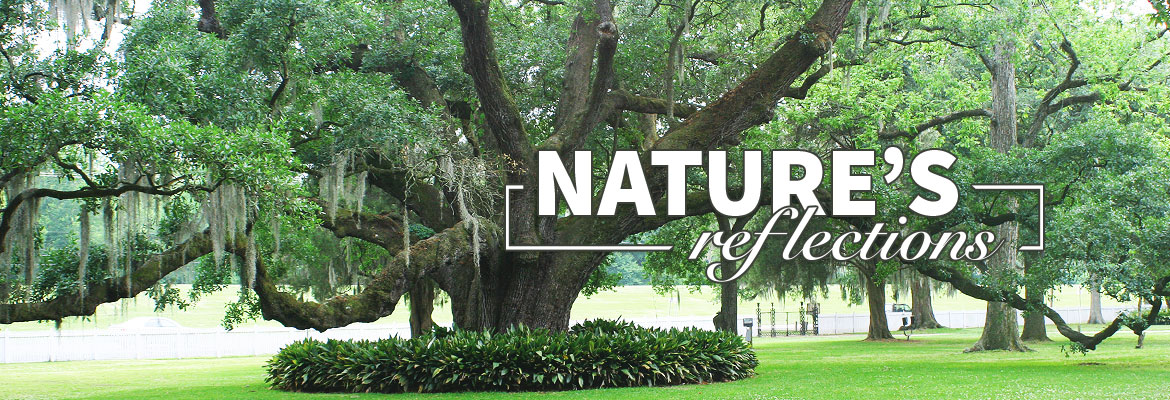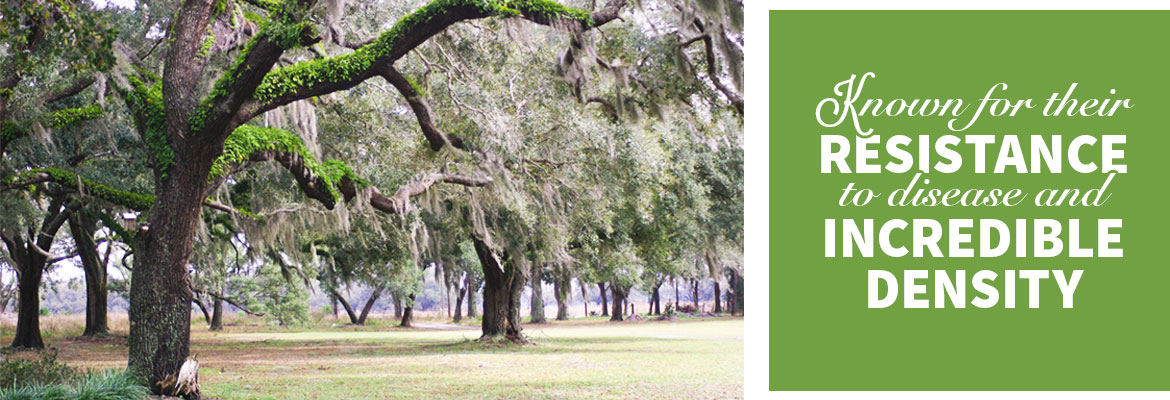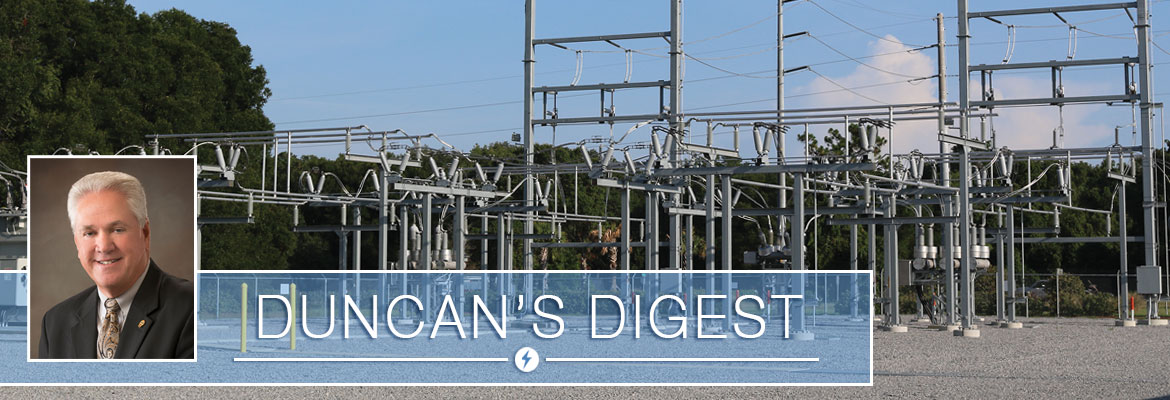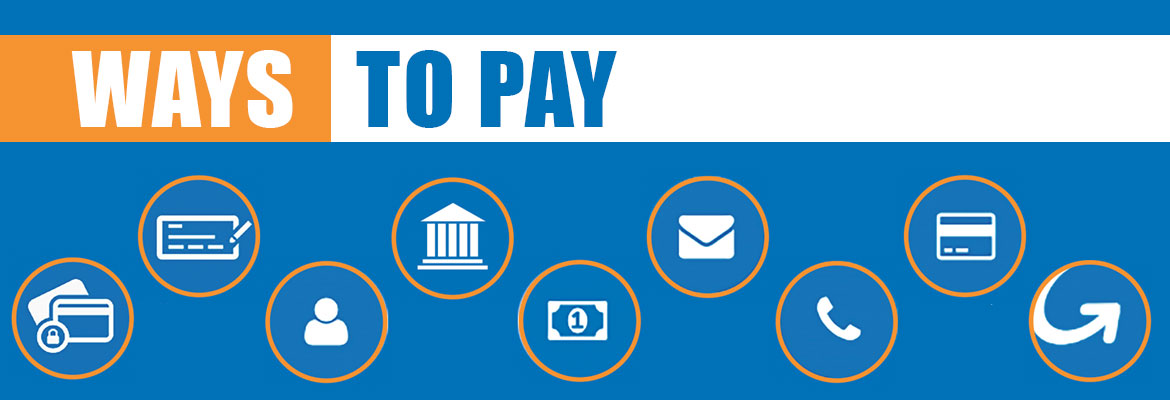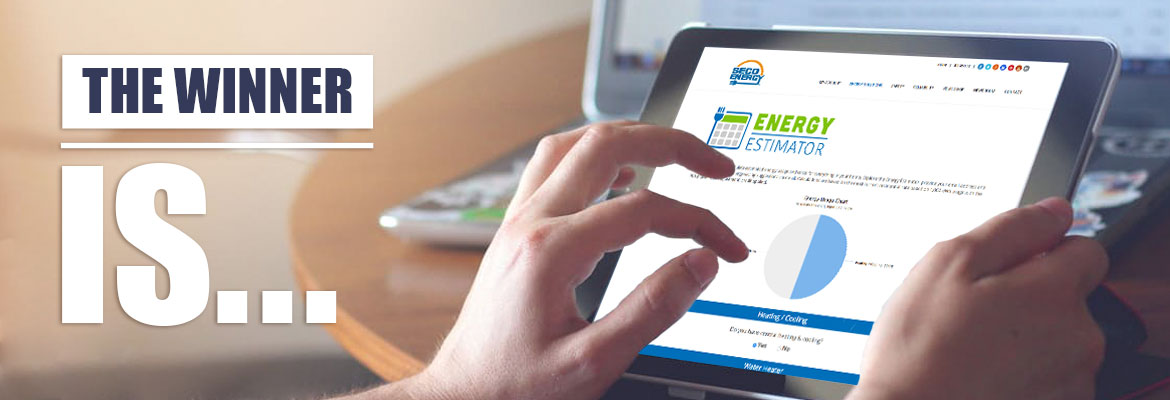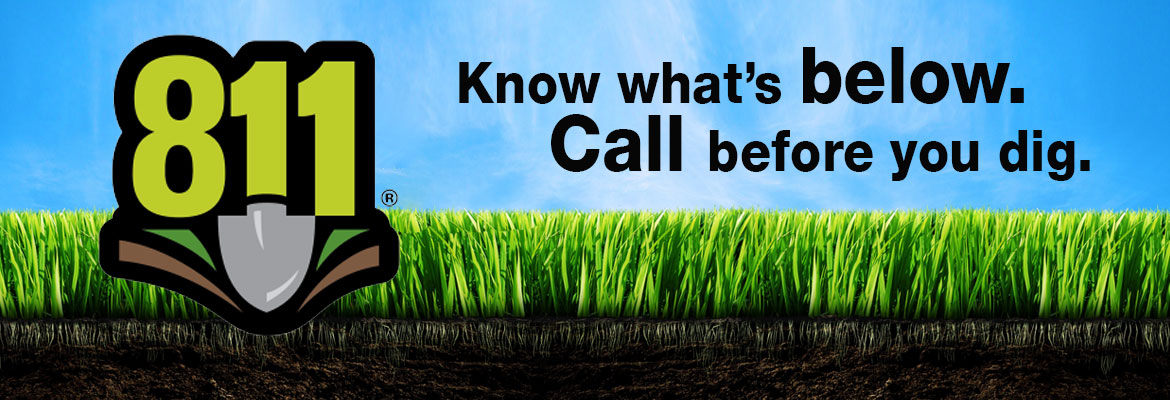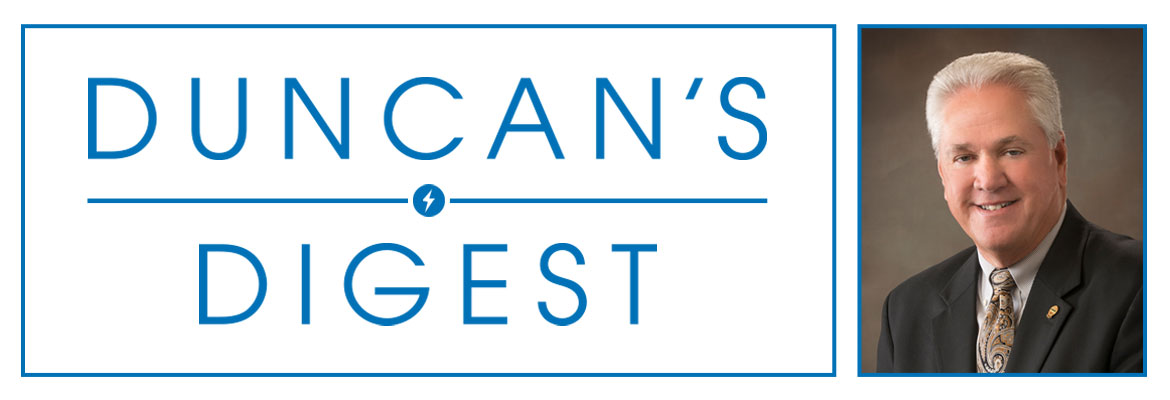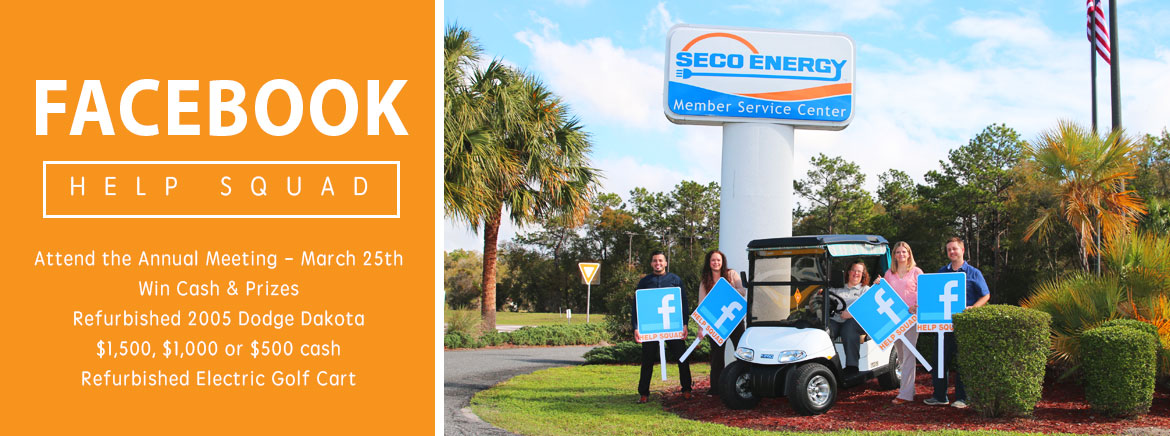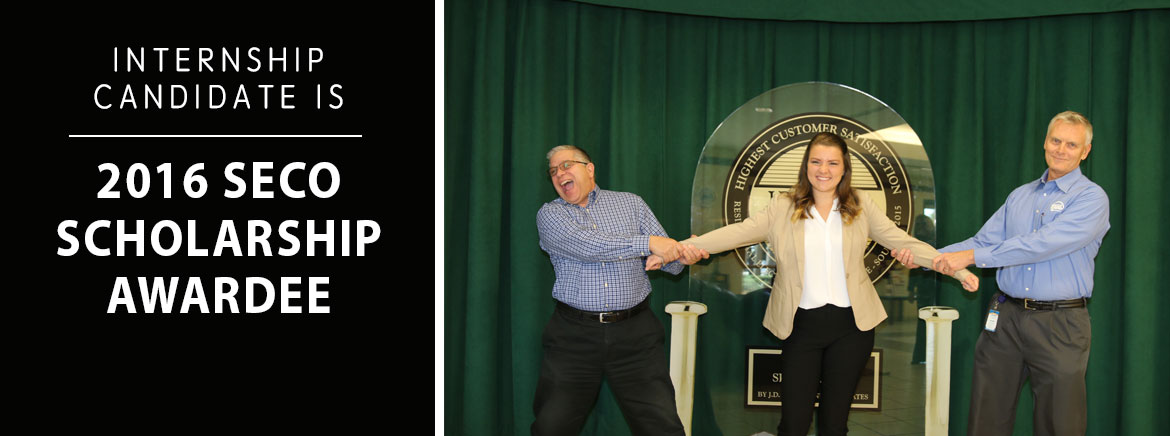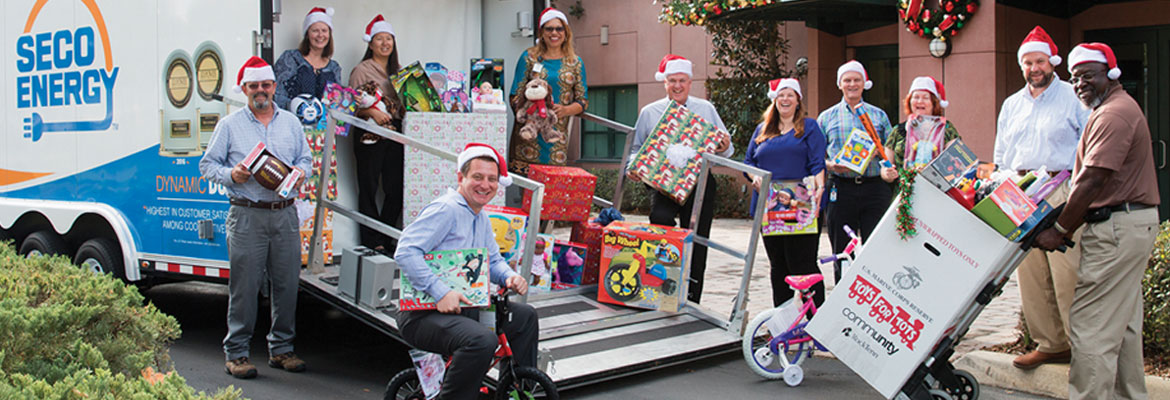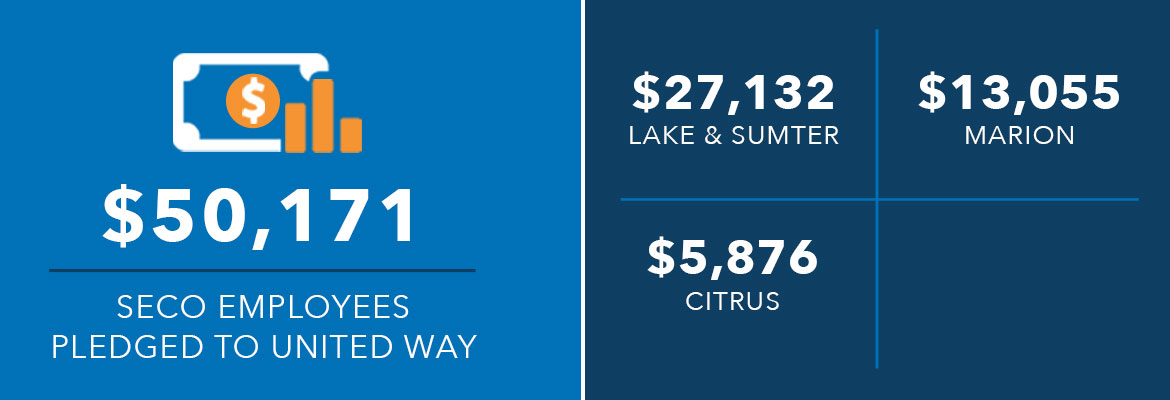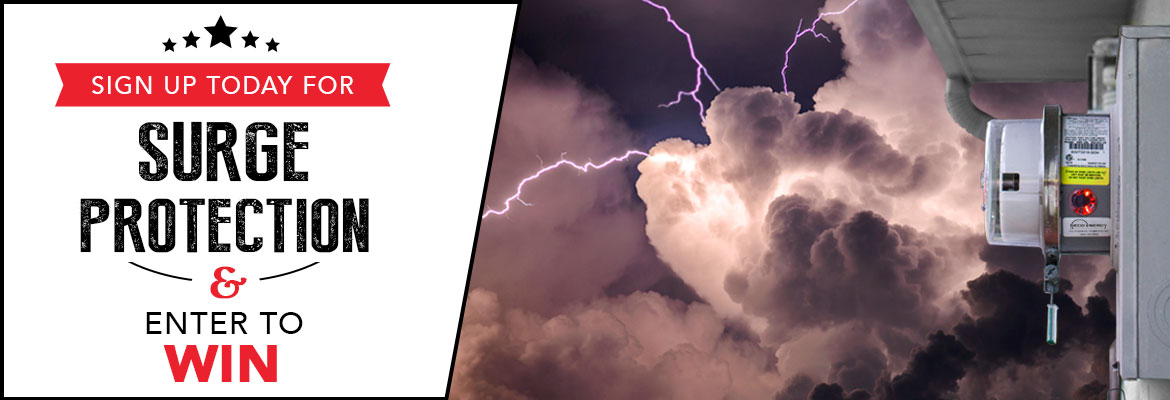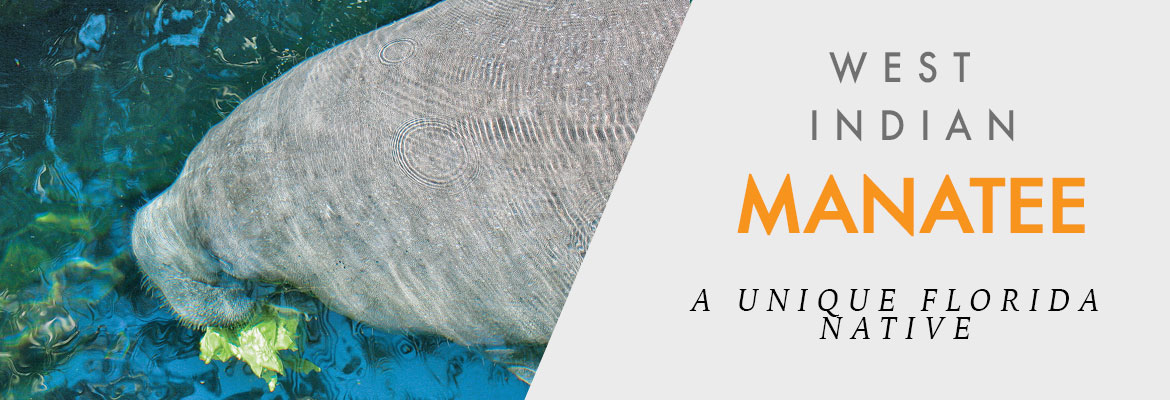SECO News, June 2017
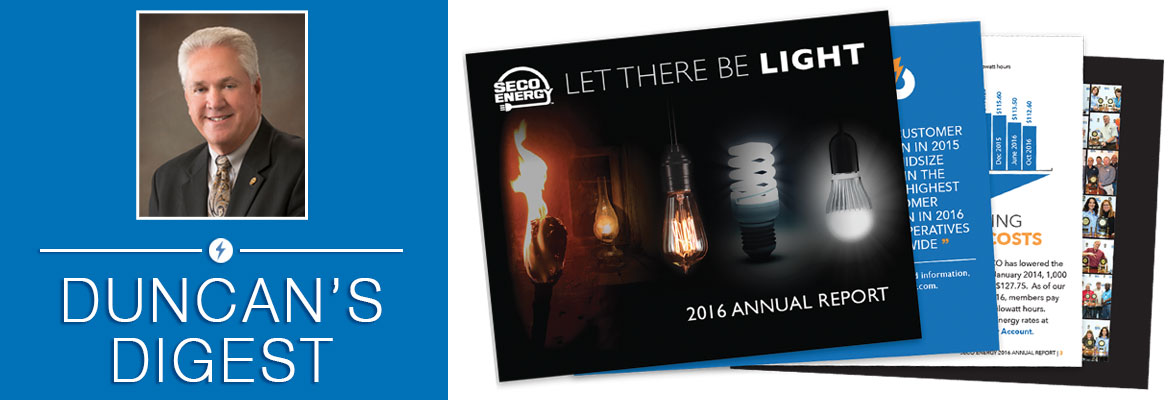
Duncan’s Digest
Dear SECO Energy Members,
From the torch, to the oil lamp, to the Edison incandescent, to the CFL and LED, lighting has changed dramatically with the times. To “let there be light” today, SECO Energy must also change with the advancements of our industry. We must control costs and provide a high level of customer service. That’s what you expect and deserve, and we stand ready to fulfill your energy needs.
With our 2016 Annual Report and audit complete, I am proud and humbled to share strong fiscal results. Staying ahead of growing power demand is a challenge that is capital and expense intensive. It is a delicate balance of design, construction, maintenance and vegetation management.
Illuminating your homes and powering your appliances and electronics is a 24/7 responsibility. “Storm Ready” is SECO’s motto when Hurricane Season converges on The Sunshine State on June 1. If a storm blows through and on the rare occasion when the lights go out, you can bet that our crews and contractors are staged and on the move to restore power the moment it’s safe. Our Emergency Restoration Plan and investments in storm preparation ensure that you will not go without power for an extended period of time.
Our dedication to you over the last decade of service improvements has manifested in SECO Energy earning two consecutive J.D. Power awards for highest customer satisfaction in the nation in our segment. The cooperative’s ACSI score improved in 2016 to 89 – an outstanding rating, especially when compared to investor-owned and municipal utilities.
What distinguishes SECO from other providers is called the cooperative difference, and is made possible by our Board of Trustees’ governance, our executive team’s leadership and, most important, the dedication and hard work of the 400+ SECO Energy employees. Learn more in the online version of the 2016 Annual Report.
Thank you, members, for rating SECO so highly and for your loyal patronage. We are humbled and privileged to serve as your Central Florida energy provider.
Jim Duncan
Chief Executive Officer
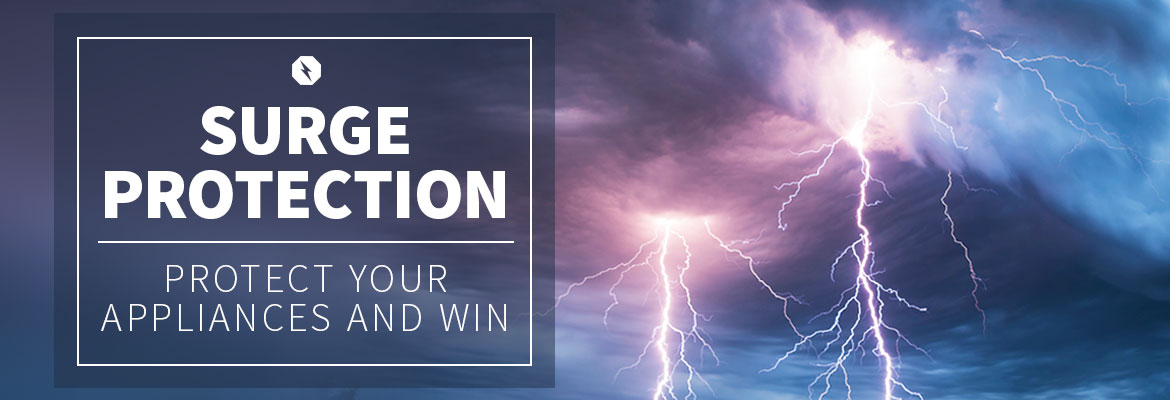
Surge Protection: Protect your Appliances and Win
With Atlantic Hurricane Season in full swing, are your large appliances protected from harmful power surges? Would you like a chance to win a $300 bill credit? Read on to learn more about SECO’s surge protection program and a chance to win.
During the month of June, The Old Farmer’s Almanac predicts daily thunderstorms with an above average rainfall. That means Florida’s daily afternoon thunderstorms will likely bring large amounts of rain, high winds and damaging lightning.
In addition, birds, small animals, falling trees or vehicles crashing into SECO power poles can cause power surges. Power surges are sudden, powerful increases in voltage that can damage or destroy household appliances and other electronic devices in your home.
SECO’s surge protection is proudly “Made in the USA” and helps you protect large appliances from damaging power surges. A certified SECO contractor will install the meter base surge arrester behind your electric meter, no appointment needed. Members can lease the surge protection for $5.95 a month with a $25 installation fee, or purchase the product for $349 with installation included. The meter base arrester is just the first step to complete protection. Members should also purchase “point of use” devices from their local home improvement or hardware store to protect sensitive electronic equipment such as televisions, computers, cordless phones and more.
All members enrolled in SECO’s surge protection program will be entered into a random drawing for a $300 bill credit. Enroll by August 15 for your chance to win. Members who currently have surge protection are already entered into the drawing.
Learn more about SECO’s surge protection and enroll online. Good luck!
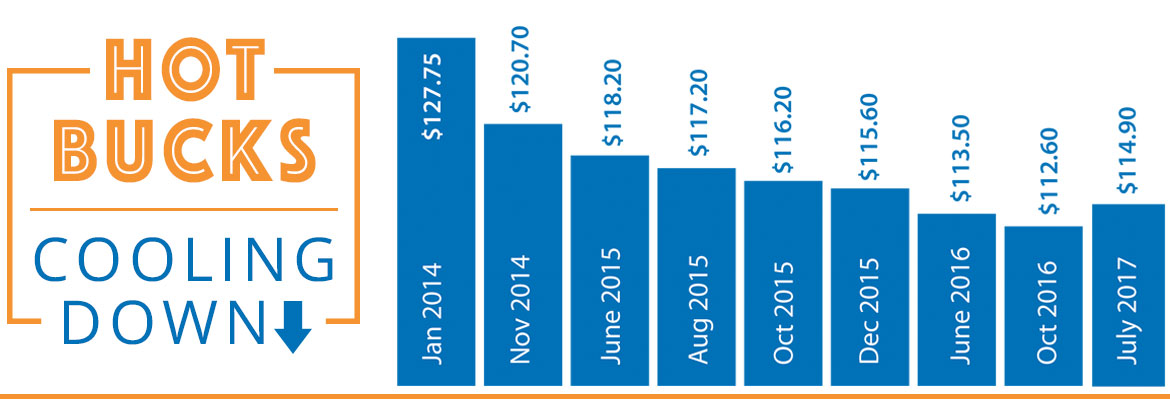
Hot Bucks Cooling Down
Natural gas consumption in the power sector has risen 25% in recent years. The U.S. Energy Information Administration forecast that natural gas prices will rise about 20% in 2017. That prediction is beginning to play out.
The overall natural gas price outlook for Q3-Q4 2017 and NYMEX futures prices indicate that rock bottom gas prices under $3/MMBtu are over. Utilities across The Sunshine State are filing for rate increases as a result.
SECO Energy members have benefitted from three years of steadily declining power costs – a decrease of about 12 percent during that timeframe. But now we must respond to the changing fuel market trends.
As a result, SECO must adjust the PCA – Power Cost Adjustment – component of your bill. Rather than paying $112.60 for 1,000 kilowatt hours, members will begin paying $114.90 for that same average usage beginning July 1 as approved by the Board of Trustees.
The SECO increase is $2.30 per 1,000 kWh. Comparatively, Duke Energy’s increase that took effect in January was $4.39 per 1,000 kWh, and Florida Power & Light’s was $7.00 – reflections of the changing market.
Learn more about SECO Energy’s financial stability in the 2016 Annual Report.
Read the full June 2017 SECO News here.




